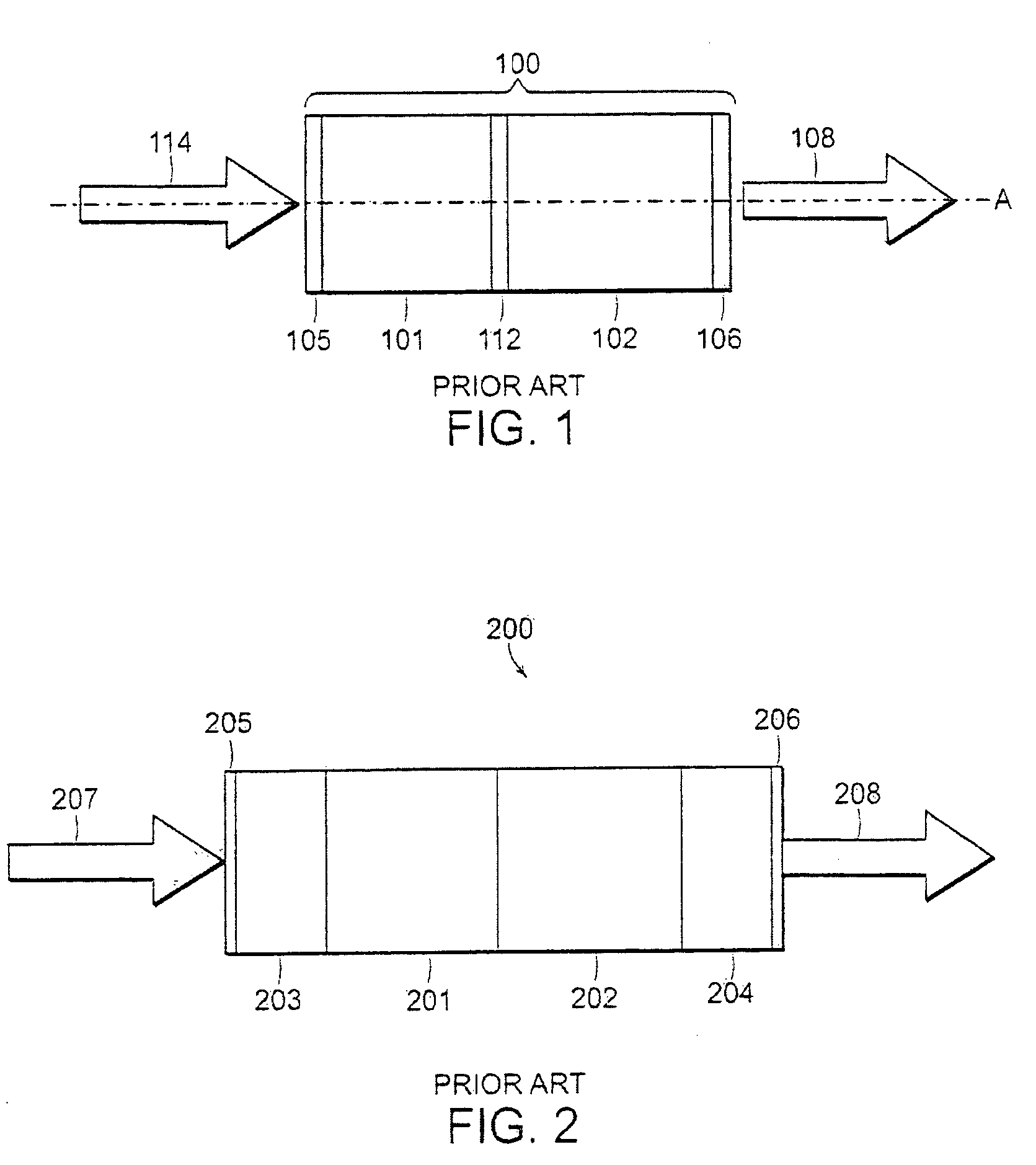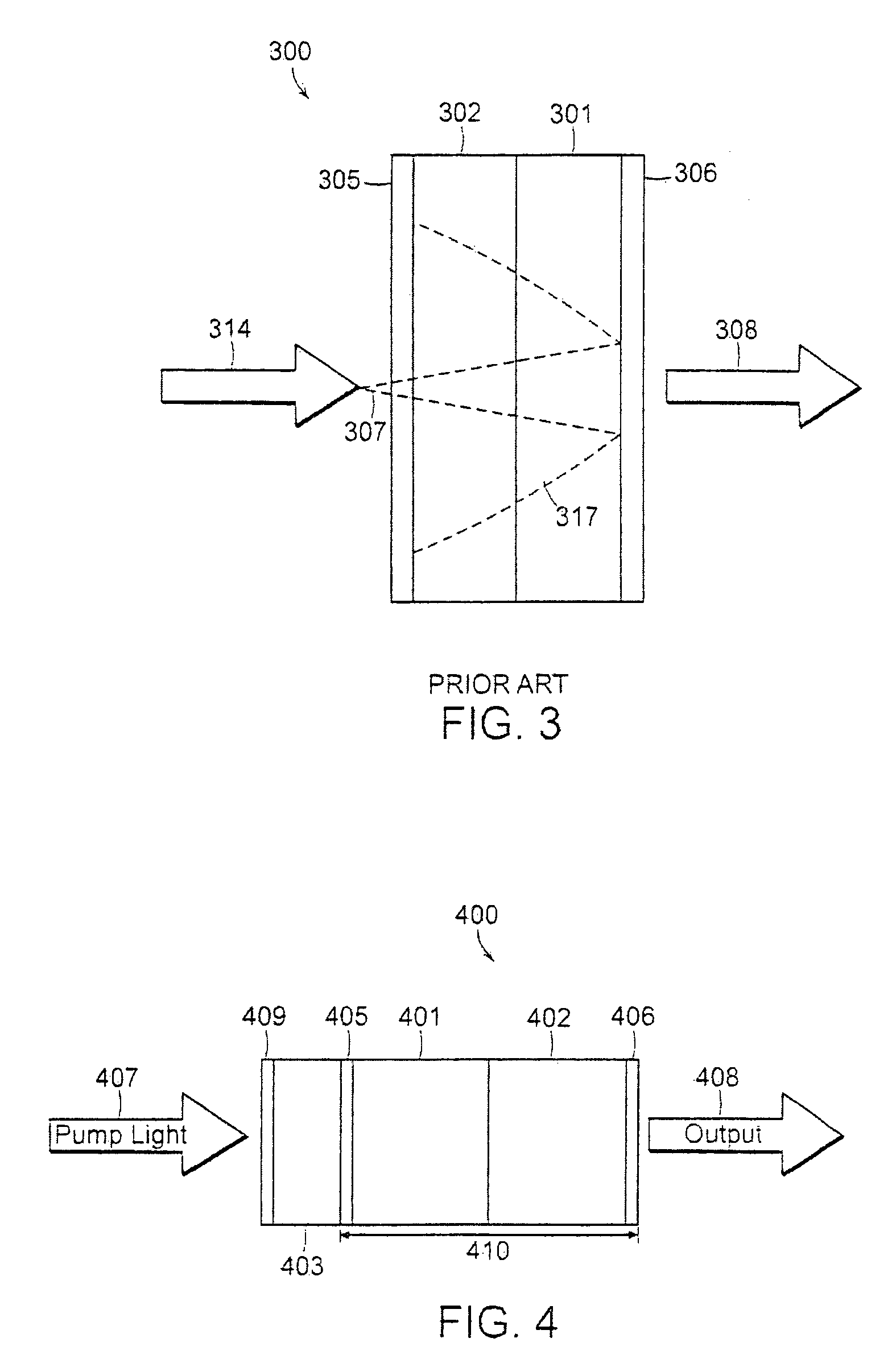Q-switched microlaser apparatus and method for use
a micro-laser and micro-switched technology, which is applied in the direction of lasers, laser cooling arrangements, laser details, etc., can solve the problems of limiting the maximum average pump power and output power of the device to levels below those desired for some applications, and occurrence of optical damage, etc., to achieve improved heat removal, reliable operation, and higher pulse repetition rate
- Summary
- Abstract
- Description
- Claims
- Application Information
AI Technical Summary
Benefits of technology
Problems solved by technology
Method used
Image
Examples
Embodiment Construction
[0039]A description of example embodiments of the invention follows.
[0040]An apparatus and method for heat removal from a passively Q-switched monolithic microlaser without significantly impairing its inherent laser performance characteristics is presented. The apparatus may comprise an optically transparent heat conductive element that may be bonded to a gain medium, which in turn may be bonded to a saturable absorber. The saturable absorber may also be bonded to a second optically transparent heat conductive element. Only the gain medium and saturable absorber are disposed within a resonant cavity formed by optical coatings located in the bond interfaces.
[0041]The optically transparent heat conductive element, or elements, serve to efficiently conduct heat from the optical beam path of the microlaser resonator without interfering with the pump light or the microlaser beam paths. In particular, because the optically transparent heat conductive elements lie outside the microlaser re...
PUM
 Login to View More
Login to View More Abstract
Description
Claims
Application Information
 Login to View More
Login to View More - R&D
- Intellectual Property
- Life Sciences
- Materials
- Tech Scout
- Unparalleled Data Quality
- Higher Quality Content
- 60% Fewer Hallucinations
Browse by: Latest US Patents, China's latest patents, Technical Efficacy Thesaurus, Application Domain, Technology Topic, Popular Technical Reports.
© 2025 PatSnap. All rights reserved.Legal|Privacy policy|Modern Slavery Act Transparency Statement|Sitemap|About US| Contact US: help@patsnap.com



